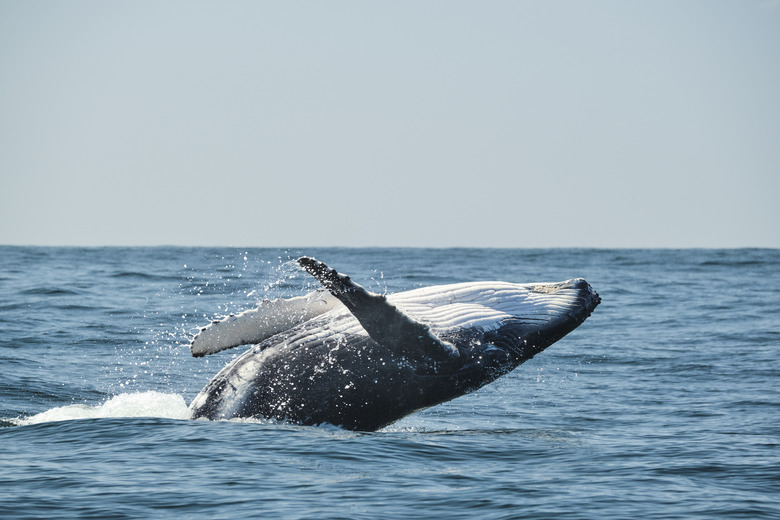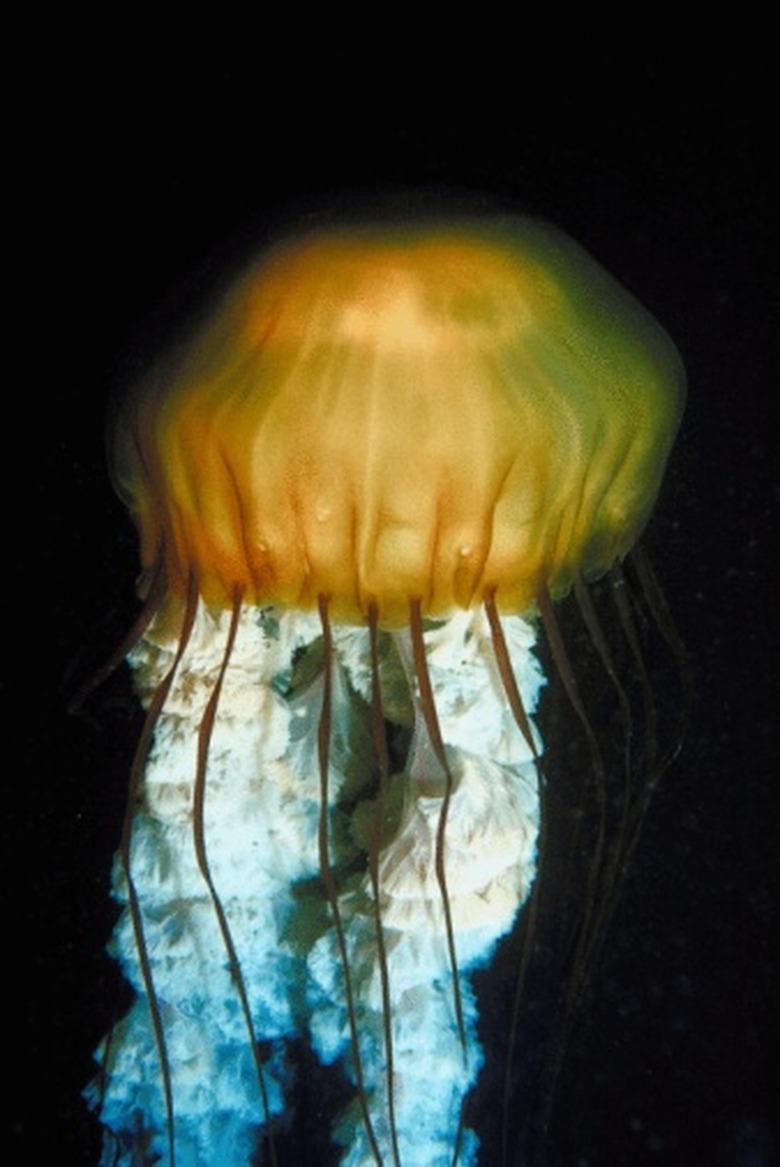What Animals Live In Aquatic Habitats?
An enormous array of animal life has evolved for survival in an aquatic environment. There are two main types of water ecosystems. Salt water, marine habitat, includes vast oceans and seas and is fed by fresh water from lakes, rivers and streams. Brackish water is where a marine and a fresh water habitat mix. Animals, of course, live in both fresh and saltwater habitats. Similar species may be found in both marine and fresh water. However, other species are specialized for existence in only one of these habitat types.
Simple Animals Species
Simple Animals Species
The simplest group of animals is the phylum Porifera, the sponges. Sponges are marine aquatic animals possessing the necessary characteristics to be classified as animals. This includes aerobic respiration, sexual reproduction, specialized cells and capability of movement. Adult sponges are attached to the ocean floor and survive by filtering water for bacteria and other microscopic organisms. However, sponge larvae are mobile and travel in the ocean current to spread throughout the ocean floor.
Other Simple Invertebrates
Other Simple Invertebrates
Animals that lack a true backbone are classified as invertebrates. This would include corals, sea anemone and jellyfish belonging to the phylum Cnidaria. Like sponges, cnidarians primarily live in marine habitats, some attached to the ocean floor and others swimming freely. They feed on small fish and other smaller animals. Many animals within this group possess bodily extension with stinging cells used to immobilize prey and simplify consumption.
Complex Invertebrates
Complex Invertebrates
Arthropods, mollusks and echinoderms belong to separate aquatic phylum and are found in marine and fresh water habitats. Echinoderms are unique because of radial symmetry, or a circular body. This group includes animals such as starfish and sand dollars. Despite appearances, echinoderms are capable of movement using small hairlike extensions on the outer surface. Mollusks are animals such as clams, mussels, octopus and squid. Although octopus and squid live in marine habitats, mollusks are very common in fresh water streams, rivers and lakes. Arthropods include marine animals such as crab, lobster and shrimp. This group also includes freshwater forms like crawdad and terrestrial pill bugs.
Birds and Mammals in a Marine Habitat
Birds and Mammals in a Marine Habitat
The higher vertebrates, birds and mammals, have also adapted to life in marine and freshwater habitats. The oceans are the home to bird species such as penguin. Penguins' wings propel them rapidly through ocean waters. Like penguins, seals, walrus and otters live primarily in the water but also venture on land to rest and mate. Whales and dolphins have evolved to live strictly in the ocean. In fact, large whales would not be capable of breathing out of water because oceanic waters assist their lungs in respiration.
Fish and Amphibians
Fish and amphibians belong to the phylum Chordata, animals with a true backbone. Amphibians are the first complex animals that developed to live out of an aquatic habitat. However, the amphibian lifecycle begins in water. Adult frogs and salamander lay eggs in the water where fishlike young hatch. As amphibians develop into adults, they grow lungs replacing gills once used to respire oxygen from the water. Fish are found in any aquatic habitat where there is sufficient water, oxygen and food. This category includes a vast number of different species. Salmon are unique: as adults they live in a marine habitat, but each year, salmon travel against powerful currents to their birthplace, a freshwater stream, to lay eggs. Fish are capable of reaching remarkable size in ocean habitats — some large fish are sharks, rays and billfish. Freshwater species include bass, trout and catfish.
Cite This Article
MLA
Bintzler, Douglas. "What Animals Live In Aquatic Habitats?" sciencing.com, https://www.sciencing.com/animals-live-aquatic-habitats-8212916/. 22 November 2019.
APA
Bintzler, Douglas. (2019, November 22). What Animals Live In Aquatic Habitats?. sciencing.com. Retrieved from https://www.sciencing.com/animals-live-aquatic-habitats-8212916/
Chicago
Bintzler, Douglas. What Animals Live In Aquatic Habitats? last modified August 30, 2022. https://www.sciencing.com/animals-live-aquatic-habitats-8212916/


